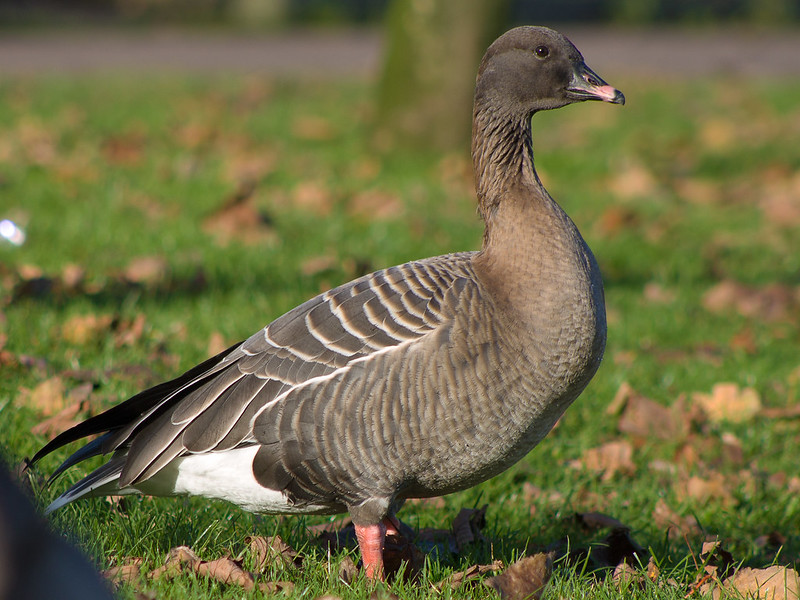Sea of Swans
Nestled in an enclosed tidal basin on Scotland’s east coast, one nature reserve boasts the achievement of recording over 200 species of visiting birds every year. Operated by the Scottish Wildlife Trust, Montrose Basin makes up part of the estuary where the River South Esk meets the North Sea. Covering an area of over 750,000 hectares, the basin consists of a variety of habitats, both marine and terrestrial. There are large regions of exposed mudflats at low tide – perfect feeding grounds for waders and similar species – as well as reedbeds, saltmarsh and a small freshwater loch. The surrounding area is made up of productive farmland and this is a further attraction for many bird species.

The large population of swans on the basin gives it its more poetic name, the “Sea of Swans”. Some of the species that visit the reserve are seasonal visitors, often migrants that choose to spend the winter in Scotland. Despite this, many species are resident all year-round and breed on the reserve. For this reason, Montrose basin is one of the best places for birdwatching in Scotland and can even offer surprise encounters with rare species such as avocets and spoonbills, which are occasional visitors to the area. The reserve caters well to visitors and there is a high-quality visitor centre and several remote hides dotted around the basin.
Birds of a Feather
One of the species Montrose Basin is famous for is the Pink-Footed Goose. The reserve is recognised as being internationally important for this bird species, meaning that it is home to a significant number of the global population. In fact, up to 80,000 Pink-Footed Geese can be seen at Montrose Basin at peak times of the year and this can make for a spectacular – and surprisingly loud – spectacle. The species is migratory and spends the spring and summer months in the arctic, before making the journey to north-west Europe in the autumn. September is the first month the birds can be seen arriving at the basin and this can be a good time to visit.

The diet of the Pink-Footed Goose is almost entirely vegetarian and is made up of grasses and crops such as potato. Farmland can therefore be a major attraction for the species and at Montrose Basin they can be seen grazing on all the major habitats that the reserve has to offer. The Pink-Footed Goose looks similar to another species of goose found at the basin – the Greylag Goose – however Pink-Footed Geese are smaller and can be distinguished by their black bills with a hint of pink, in comparison to the orange bills of Greylags. Top tip for spotting Pink-Footed Geese at Montrose Basin: use the telescopes available at the visitor centre for great views.
Best of the Rest
The mudflats and tidal areas at Montrose Basin provide ideal habitat for a range of wading birds such as redshank, knots and wigeons. Large numbers of Shelduck spend the winter on the reserve but more than 10 pairs are thought to breed here and remain throughout the year. The mudflats and waters are rich in nutrients and this is one of the main reasons why the basin is so popular among birds, as feeding opportunities are rife and conditions are perfect for raising chicks. Take advantage of the many walking trails that surround the basin to increase your chances of seeing as many species as possible. These trails will often be quiet, especially early in the day, meaning the birds will be unlikely to be disturbed.
For short rest stops, spending time in the bird hides can provide you with views of other species too. During the summer, it’s possible to have regular encounters with Ospreys fishing in the basin, along with sightings of other birds of prey such as Peregrine Falcons and Sparrowhawks. The Ospreys often breed at the reserve and young birds can be seen later in the summer months. Montrose Basin isn’t just about birds, however, and for other wildlife highlights, keep an eye out for seals swimming just off the coast and Roe Deer grazing on the nearby farmland.
